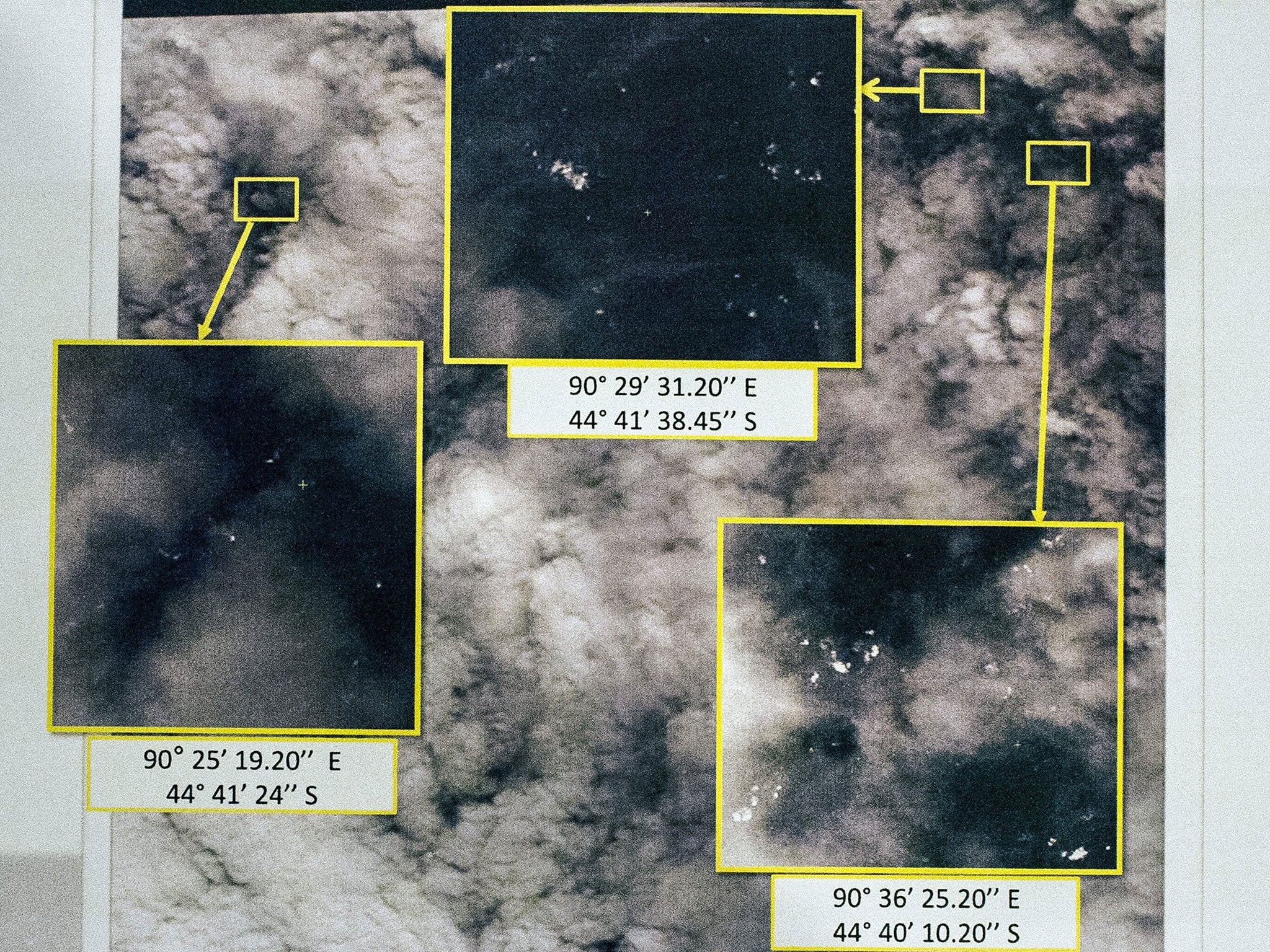Flight MH370: Hopes of finding wreckage rise as satellite pictures show possible debris field in southern Indian Ocean

Your support helps us to tell the story
From reproductive rights to climate change to Big Tech, The Independent is on the ground when the story is developing. Whether it's investigating the financials of Elon Musk's pro-Trump PAC or producing our latest documentary, 'The A Word', which shines a light on the American women fighting for reproductive rights, we know how important it is to parse out the facts from the messaging.
At such a critical moment in US history, we need reporters on the ground. Your donation allows us to keep sending journalists to speak to both sides of the story.
The Independent is trusted by Americans across the entire political spectrum. And unlike many other quality news outlets, we choose not to lock Americans out of our reporting and analysis with paywalls. We believe quality journalism should be available to everyone, paid for by those who can afford it.
Your support makes all the difference.Hopes have been raised of finding wreckage from the Malaysian Boeing 777 which crashed in unexplained circumstances earlier this month after a French satellite company released recent images of what could be a debris field in the southern Indian Ocean.
The images - described by Malaysia's Transport Minister, Hishammuddin Hussein, as "clearly the most credible lead we have had so far" - show 122 objects scattered over about 400 square kilometres of ocean, ranging from roughly one metre to 23 meters in length. The length of a 777 wing is 27.4 meters. Some of the objects, Mr Hishammuddin said, "appeared to be bright, possibly indicating solid material".
The pictures - captured last Sunday by a French-based satellite division of Europe's Airbus Group - were relayed to Australian authorities coordinating the multinational hunt for Malaysia Airlines Flight 370, as several search planes reported seeing objects in the water, including what appeared to be two pieces of rope.
As a dozen aircraft and five ships took advantage of a short window of good weather to resume the search in a remote stretch of ocean about 2,500 kilometres south-west of Perth, the first of what promises to be an avalanche of lawsuits against Boeing and Malaysia Airlines was signalled by a US legal firm.
Chicago-based Ribbeck Law said it expects to represent the families of more than half of the 227 mainly Chinese passengers of MH370, which disappeared from radar screens during a night flight from Kuala Lumpur to Beijing on 8 March, ending up thousands of miles off course. The firm has filed a petition against Boeing, seeking documentary evidence of possible design and manufacturing defects in the 777.
Although the crash zone covers an estimated 1.6 million square kilometres, and is "as close to nowhere as it’s possible to be", as the Australian Prime Minister Tony Abbott described it, he said he was "confident" that debris would be recovered.
Mr Abbott, who led MPs in a moment of silence for the dead, who include six Australians and an Australian-based New Zealander, told Australian television: "We're throwing everything we have at this search. We owe it to the families, we owe it to an anxious world to do everything we can to solve the riddle of this extraordinarily ill-fated flight."
In Kuala Lumpur, Mr Hishammuddin also pledged that the search would continue. "Our determination to find MH370 remains steadfast," he said. "We will never give up trying to find the plane, in order to bring closure to the families and explain what happened."
Although investigators say it is unclear why the plane diverted off its flight path and - as an analysis of satellite data has concluded - crashed in the Southern Ocean, Ribbeck Law believes a mechanical fault caused either a fire in the cockpit or a loss in cabin pressure which rendered both pilots unconscious.
"That plane was actually a ghost plane for several hours, until it ran out of fuel," the firm's head of global aviation litigation, Monica Kelly, told reporters on Wednesday.
Distraught relatives of passengers and crew have accused the Malaysian government of bungling the investigation and putting out false information. Some are also outraged that Malaysia Airlines informed them about the death of their loved ones in a text message, although the airline says that only happened in a minority of cases, and as a last resort.
Jerry Skinner, a US aviation and personal injury lawyer, told Australia's ABC radio: "Most people file suits not because they've lost somebody, but because of the way the airlines treat them. And Malaysia Airlines has done a masterful job of making these passengers' families angry."
Join our commenting forum
Join thought-provoking conversations, follow other Independent readers and see their replies
Comments